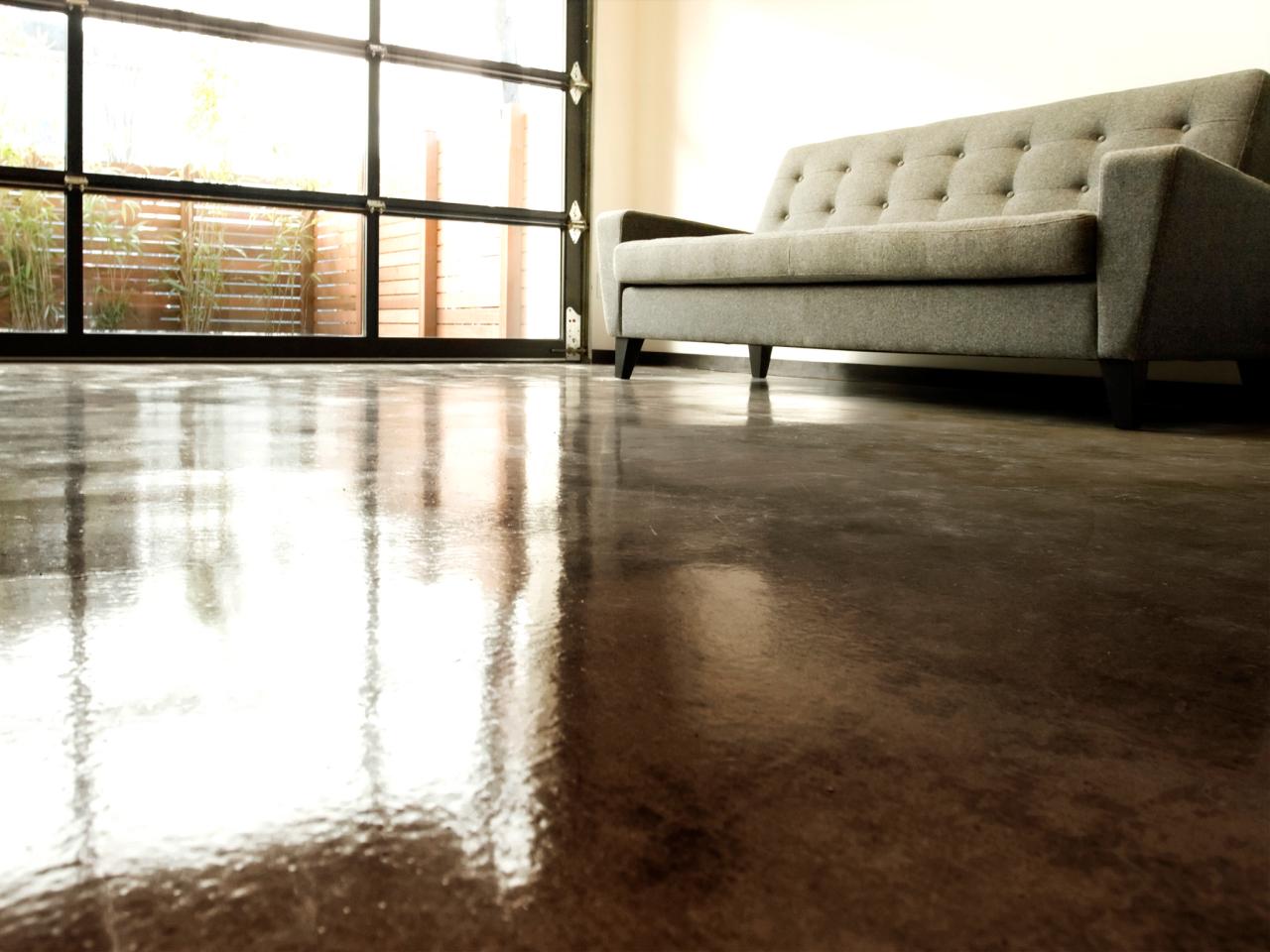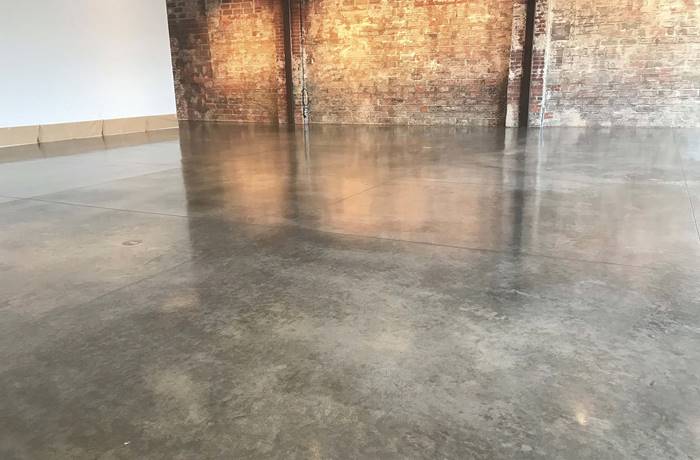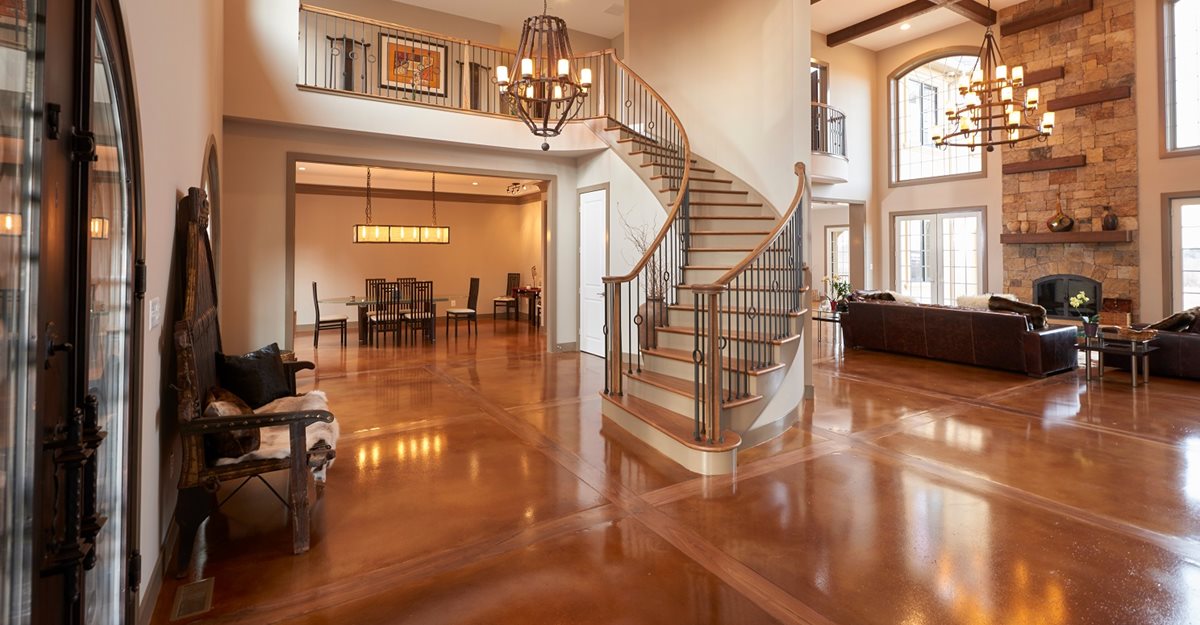Why Choose Concrete Floor Stains for Your Interior Spaces?
Concrete floor stains are quickly becoming a popular option for homeowners looking to enhance their interior spaces. Not only do they offer a wide range of design possibilities, but they are also a cost-effective and durable solution for floors. With the right application, stained concrete can mimic the appearance of more expensive materials such as marble or tile, all while providing a long-lasting, low-maintenance surface. Here are several reasons why you might want to consider concrete floor stains for your home:
- Affordability: Compared to other flooring options like hardwood, tile, or stone, concrete stains offer a more affordable solution. The materials themselves are relatively inexpensive, and since concrete is often already part of a home’s foundation, you’re essentially just enhancing what’s already there. This can save significant costs on additional flooring materials and installation fees.
- Durability and Longevity: Stained concrete floors are incredibly durable and can last for decades when properly maintained. Unlike hardwood or carpet, concrete doesn’t scratch easily, and it won’t warp or crack under changing temperatures and moisture levels. This makes stained concrete an ideal choice for high-traffic areas like living rooms, kitchens, and entryways.
- Low Maintenance: One of the biggest draws of stained concrete is its low-maintenance nature. Once sealed, these floors are resistant to spills, stains, and moisture, making them easy to clean with just a mop and mild cleaner. Regular maintenance involves occasional resealing every few years, which helps protect the surface and maintain its luster.
- Customizable Appearance: Concrete stains come in a variety of colors and finishes, allowing you to fully customize the look of your floors. Whether you prefer a sleek, polished appearance or a more rustic, textured finish, concrete stains offer endless design possibilities. You can even achieve intricate patterns and faux finishes like stone or wood through skilled application techniques.
- Eco-Friendly Option: If sustainability is important to you, concrete stains are an environmentally-friendly flooring option. Since you’re working with existing materials rather than introducing new ones, you’re reducing waste. Additionally, concrete floors can help with energy efficiency by absorbing and storing heat, which can reduce the need for excessive heating and cooling.
- Versatility for Any Style: Whether your home leans toward modern, industrial, or traditional styles, stained concrete can seamlessly blend into any design aesthetic. It’s neutral yet elegant, making it a versatile option for various interior styles. You can pair it with rugs, furniture, and decor to enhance the look of your room without overwhelming the space.

Types of Concrete Stains: Which One is Right for Your Home?
When it comes to staining concrete floors, you have two main options: acid-based stains and water-based stains. Each type offers distinct advantages and will create a unique look for your space. Understanding the differences between these two stain types can help you choose the right one for your home. Let’s explore both in detail:
Acid-Based Stains
Acid-based concrete stains penetrate the surface of the concrete and react chemically with the cement to create a variegated, natural-looking finish. This type of stain creates a rich, earthy tone that mimics natural stone, with colors ranging from deep browns to greens and blues. Because the stain reacts with the concrete, the color is permanent and resistant to fading.
Water-Based Stains
Water-based stains, on the other hand, don’t rely on a chemical reaction with the concrete. Instead, they deposit pigment on the surface of the concrete, offering a wider range of color options, including bright and bold hues like reds, yellows, and purples. Water-based stains tend to produce a more consistent and uniform appearance, which can be ideal for modern or contemporary design schemes.
Comparison of Durability
While both stain types are durable, acid-based stains tend to be slightly more long-lasting because they chemically bond with the concrete. Water-based stains sit on the surface, making them more susceptible to wear over time, but they still offer excellent performance when properly sealed.
Ease of Application
Water-based stains are generally easier to apply, especially for DIYers, because they don’t involve the same chemical reactions as acid-based stains. Acid-based stains require more preparation and safety precautions, as the chemicals can be harsh and require neutralizing after application.
Environmental Considerations
For homeowners who prioritize eco-friendly options, water-based stains are the greener choice. They are typically low in VOCs (volatile organic compounds) and are safer to work with indoors. Acid-based stains, while beautiful, can release fumes during application and require proper ventilation.
Which to Choose?
The decision between acid and water-based stains ultimately depends on your aesthetic preferences and how you plan to use the space. If you want a natural, earth-toned look with a one-of-a-kind finish, acid stains are the way to go. If you’re seeking a more vibrant color palette or a smoother, more uniform finish, water-based stains may be the better option.
Step-by-Step Guide to Applying Concrete Floor Stains
Staining concrete floors is a project that can be tackled by homeowners with a bit of DIY knowledge. However, careful preparation and following the right steps are key to achieving a professional-looking finish. Here’s a step-by-step guide to help you stain your interior concrete floors successfully:
Prepare the Surface
Before applying any stain, your concrete surface must be thoroughly cleaned and free of debris, grease, or old sealants. Use a concrete cleaner to scrub away dirt and stains, then let the surface dry completely. If your concrete has cracks or imperfections, repair them before moving forward to ensure a smooth, even finish.
Protect Surrounding Areas
Staining concrete can be a messy job, so it’s essential to protect any areas you don’t want to be stained. Use painter’s tape to cover baseboards, walls, and adjacent floors. Lay down plastic sheeting or drop cloths to catch any spills or overspray during the staining process.
Apply the Stain
Acid-based stains should be applied using a sprayer to ensure even coverage. Work in small sections and use a brush to work the stain into the concrete. For water-based stains, a brush or roller can be used to spread the stain evenly. Be sure to follow the manufacturer’s instructions for the specific product you’re using.
Allow the Stain to Set
After applying the stain, allow it to set for the recommended time. Acid-based stains may take several hours or overnight to react fully with the concrete. During this time, you’ll start to see the color variations and patterns emerging. Water-based stains, on the other hand, typically dry more quickly.
Neutralize Acid Stains
If you’ve used an acid-based stain, the next step is to neutralize the acid residue. This is done by applying a mixture of water and baking soda to the stained surface and scrubbing with a brush. This step is crucial for ensuring that the stain is fully set and won’t cause problems later.
Seal the Concrete
Once the stain has dried and, in the case of acid stains, been neutralized, the final step is to apply a concrete sealer. The sealer protects the stained surface from moisture, stains, and wear, and it also enhances the color and shine of the floor. Apply the sealer in thin, even coats, allowing it to dry between applications.
Pros and Cons of Using Concrete Stains for Interior Flooring
Like any flooring option, stained concrete has its advantages and disadvantages. Before deciding whether concrete stains are right for your home, it’s important to weigh both the benefits and the potential drawbacks. Here are the pros and cons of using concrete stains for interior flooring:
Pro: Durability
Stained concrete is incredibly durable and can withstand heavy foot traffic, making it ideal for high-traffic areas like living rooms and kitchens. When properly sealed, concrete floors resist moisture, stains, and scratches, ensuring long-lasting performance.
Con: Coldness Underfoot
One downside of concrete flooring is that it can feel cold underfoot, especially in cooler climates. While rugs or radiant floor heating can help mitigate this issue, it’s something to consider if you prefer a warmer flooring option.
Pro: Easy Maintenance
Stained concrete floors are low maintenance and easy to clean. Regular sweeping and mopping are all that’s needed to keep them looking their best. Occasional resealing is required, but it’s a relatively simple process compared to refinishing hardwood or replacing carpet.
Con: Hard Surface
The hardness of concrete can be a drawback for some homeowners, as it may feel uncomfortable to stand on for long periods. Unlike softer flooring materials, concrete offers no cushioning, which could be a concern in areas where comfort is a priority.
Pro: Design Flexibility
Concrete stains provide a wide range of design possibilities. Whether you want a natural stone look, a polished marble appearance, or vibrant, bold colors, concrete stains allow for complete customization of your floors. This versatility makes them suitable for various interior design styles.
Con: Susceptible to Cracks
While concrete is durable, it’s not immune to cracking over time. Changes in temperature, moisture, or the settling of the foundation can cause cracks to develop. Although minor cracks can often be repaired, larger ones may require more extensive work.
Design Ideas for Using Concrete Stains in Different Rooms
Stained concrete floors can be adapted to suit a variety of rooms and design styles. From sleek modern living rooms to rustic kitchens, the possibilities are endless. Here are some design ideas for using concrete stains in different areas of your home.
Living Room
In the living room, stained concrete can create a polished, sophisticated look. Opt for a neutral stain color like gray or taupe to provide a modern, minimalist feel. Pair the concrete floor with area rugs, plush furniture, and sleek decor for a balanced, inviting space.
Kitchen
For the kitchen, stained concrete can offer both style and practicality. Choose a stain that mimics the look of natural stone, such as earthy browns or tans, to complement wooden cabinetry and stainless steel appliances. The durability of concrete makes it a great choice for the kitchen, as it can handle spills and heavy foot traffic with ease.
Bathroom
Concrete stains are also ideal for bathrooms, where moisture resistance is key. A water-based stain in a light, airy color like soft blue or pale gray can create a spa-like atmosphere. Add radiant floor heating to counteract the coolness of the concrete and make the space feel cozy and luxurious.
Bedroom
While concrete floors might not be the first thing you think of for a bedroom, they can work beautifully in modern or industrial-style spaces. A soft, warm stain color, like beige or sand, paired with a large, textured rug, can add warmth and comfort to the room without sacrificing the edgy aesthetic of concrete.
Home Office
In a home office, concrete floors can create a clean, professional look. Opt for a sleek, polished stain in a dark shade like charcoal or slate to give the space an air of sophistication. The low-maintenance nature of concrete also makes it a practical choice for workspaces where durability is important.
Basement
Basements are a perfect spot for stained concrete floors, as the material is resistant to moisture and won’t warp or swell like wood or laminate. Choose a darker stain to hide imperfections and pair it with bright lighting to make the space feel open and inviting.
How to Maintain and Care for Stained Concrete Floors
Stained concrete floors are known for their durability and low-maintenance nature, but like any flooring, they require some care to keep them looking their best. Proper maintenance will not only preserve the beauty of your stained concrete but also extend its lifespan. Here are some tips for maintaining and caring for stained concrete floors:
Regular Cleaning
Routine cleaning is essential for maintaining the appearance of your stained concrete floors. Sweep or vacuum regularly to remove dust and debris, which can act as abrasives and dull the surface over time. For deeper cleaning, use a mop and a pH-neutral cleaner designed for concrete floors.
Avoid Harsh Cleaners
Harsh cleaners, such as those containing ammonia or bleach, can damage the sealant on your stained concrete floors. Stick to mild, non-abrasive cleaners to protect the finish. If spills occur, wipe them up promptly to prevent staining or damage to the surface.
Protect Against Scratches
While concrete floors are tough, they can still be scratched by sharp objects or heavy furniture. Use felt pads under the legs of furniture and avoid dragging items across the floor. Placing rugs or mats in high-traffic areas can also help prevent wear and tear.
Reseal Periodically
One of the most important aspects of maintaining stained concrete floors is resealing them periodically. The sealer acts as a protective barrier, guarding against moisture, stains, and scratches. Depending on the level of foot traffic in your home, you may need to reseal every two to three years to keep the floor looking its best.
Address Cracks Promptly
Over time, small cracks may develop in your concrete floors due to temperature changes or settling. It’s important to address these cracks as soon as they appear to prevent them from spreading. Use a concrete patching product to fill in the cracks and reseal the area to maintain the floor’s appearance.
Buff and Polish for Added Shine
If you want to maintain the shine and luster of your stained concrete floors, consider buffing or polishing them periodically. This can help restore the floor’s glossy finish and enhance its overall appearance. Polishing can be done with a commercial floor buffer or by hiring a professional service.
Common Mistakes to Avoid When Staining Concrete Floors
Staining concrete floors can yield beautiful, long-lasting results when done correctly, but several common mistakes can ruin the finish or cause problems down the line. Avoiding these pitfalls is key to achieving a professional-looking stained concrete floor. Here are some mistakes to watch out for:
Skipping Surface Preparation
Proper surface preparation is crucial when staining concrete. Failing to clean the surface thoroughly or neglecting to repair cracks and imperfections can lead to uneven staining and poor adhesion. Always take the time to clean, repair, and prepare the concrete before applying the stain.
Using the Wrong Stain Type
Choosing the wrong type of stain for your concrete can lead to disappointing results. For example, using a water-based stain in an area that’s prone to moisture may cause it to wear down quickly. Make sure to select the appropriate stain type based on the conditions of the space and the desired look.
Inconsistent Application
Applying the stain unevenly can result in blotchy or streaky floors. It’s important to work in small sections and use consistent techniques to ensure even coverage. If you’re using a sprayer, maintain a steady distance from the surface and overlap your passes to avoid streaks.
Not Neutralizing Acid Stains
When using acid-based stains, it’s crucial to neutralize the acid residue after the stain has reacted with the concrete. Skipping this step can cause the floor to become overly acidic, leading to future problems with the finish or sealer. Be sure to neutralize the surface with a mixture of water and baking soda before sealing.
Sealing Too Soon
Sealing your concrete floors before the stain has fully dried can trap moisture and cause the finish to cloud or bubble. Always allow ample drying time, following the manufacturer’s instructions, before applying the sealer. If you’re unsure, it’s better to wait a little longer to avoid ruining your work.
Neglecting Resealing
Once your stained concrete floors are sealed, it’s easy to forget about maintenance. However, neglecting to reseal the floors as needed can lead to dullness, stains, and wear. Keep an eye on the condition of your floors and reseal them periodically to protect the surface and maintain their beauty over time.
Concrete Stain
Reasons to Choose Concrete Floors Over Traditional Flooring
How to Apply an Acid-Stain Look to Concrete Flooring
Alternative Finishes for Interior Concrete Floors
Concrete Floors – Pros & Cons of Concrete Flooring
Related Posts:
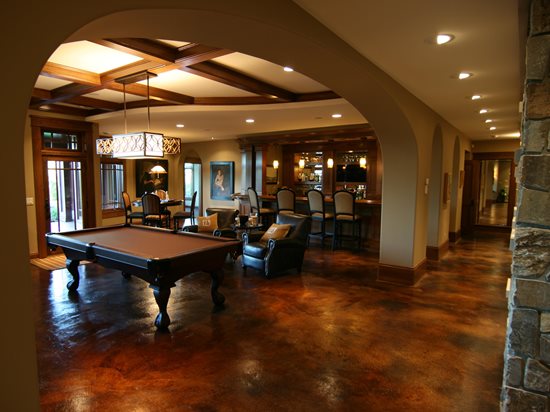

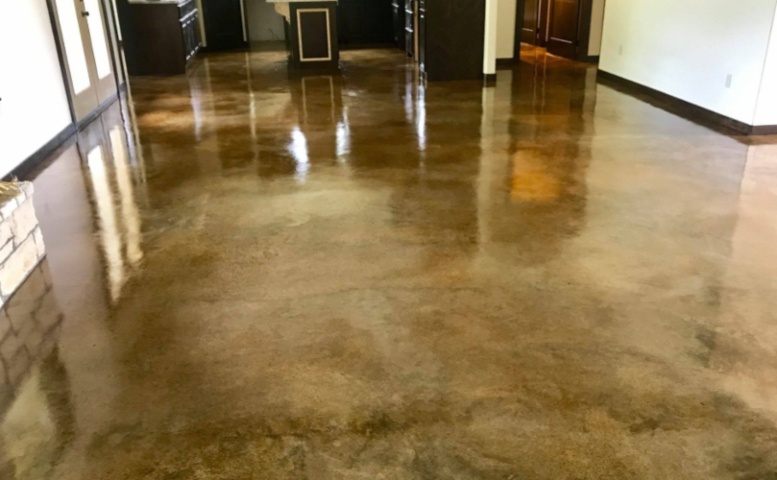




_1499887981.jpg)
